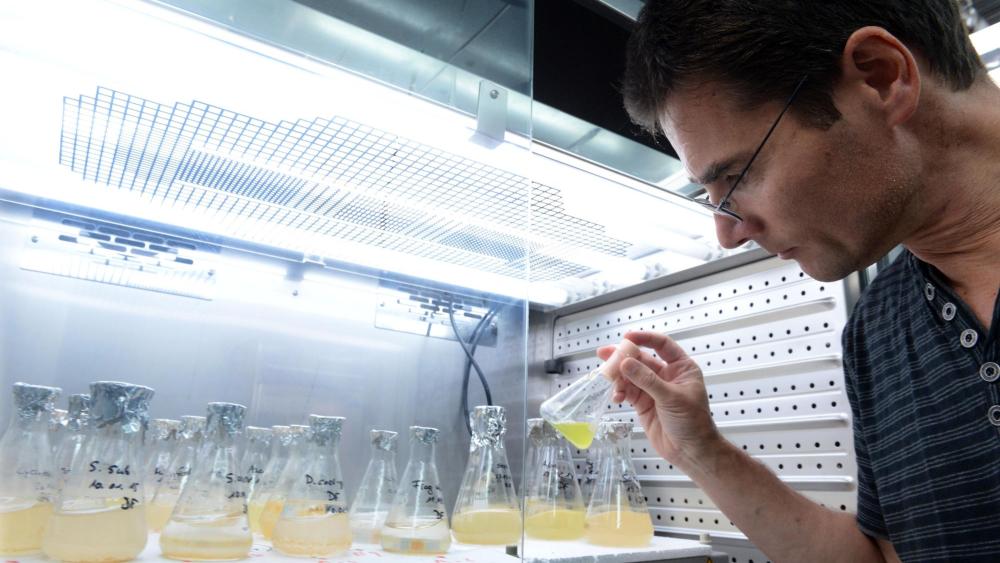
In laboratory experiments, scientists compare the growth of Prymnesium parvum under different environmental conditions. © David Ausserhofer/IGB
The microalgae Prymnesium parvum is present in small numbers in many bodies of water – for example in Europe, North and South America and Asia – and can survive there permanently in some cases. Only when certain environmental conditions come together can the algae multiply explosively and trigger a mass die-off of fish and other gill-breathing organisms, as happened in the Oder in the summer of 2022. The environmental conditions that cause a mass bloom of Prymnesium have not yet been fully clarified. In addition to salinity and water temperature, the light supply and the availability of nutrients such as nitrogen and phosphorus in the water appear to play a role. It is also still unclear under which conditions Prymnesium parvum produces its toxins, the prymnesins.
Subproject 6 "Development, growth and toxin production of Prymnesium parvum" is dedicated to the central questions surrounding the reproduction and toxin production of the alga as a function of environmental factors. In laboratory experiments, the scientists determine the growth rate under various combinations of relevant environmental conditions (salinity, temperature, nutrient concentration), which are closely compared with the real conditions in the Oder River and its tributaries recorded in subproject 3. The researchers in subproject 6 are also exposing the algae to changes in salinity or nutrient ratios in order to find out how these stress factors affect toxin production. The focus is on the strain of Prymnesium parvum which was present in the River Oder in the summer of 2022. Other Prymnesium strains will be included for comparison. In collaboration with subproject 5, these strains will be genetically characterised and, among other things, the genes responsible for the toxin production of the algae will be investigated.

